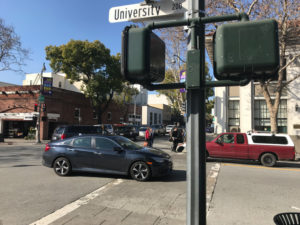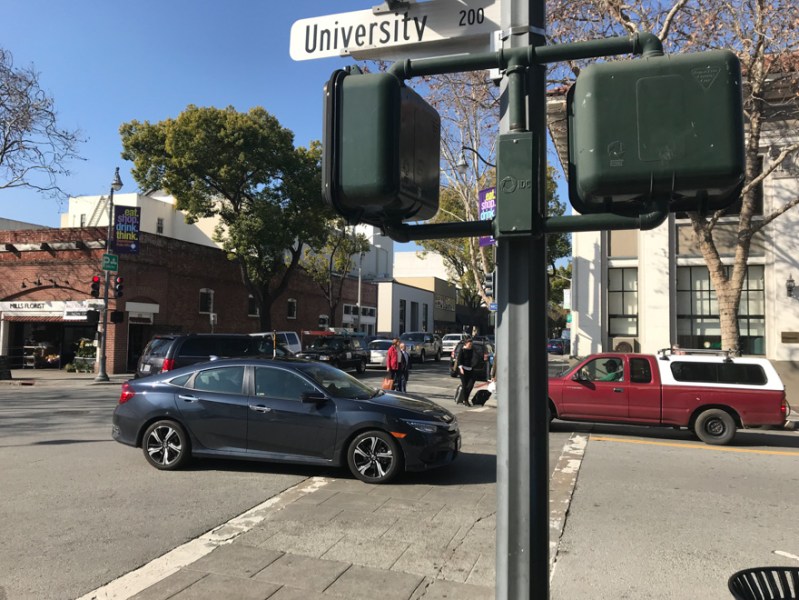Action has stalled on the Palo Alto City Council’s decision to “study the feasibility of converting parts of University Avenue to a pedestrian zone.”

While the Council voted unanimously to add the program to the city’s comprehensive plan in October, Palo Alto Director of Planning & Community Environment Hillary Gitelman stated in an email to The Daily that the proposed action has yet to take place.
“We have not been tasked to conduct a study at this point,” Gitelman wrote. “If we are asked to do so, I’m sure it will involve extensive community engagement and we would welcome [the Stanford community’s] participation.”
Council members Adrian Fine and Greg Tanaka expressed support for a pedestrian zone in Palo Alto, noting that the idea has been circulating for decades. However, Fine said he was concerned that not all residents would support such an initiative.
“A lot of folks are worried about traffic and parking issues,” he said. “Naturally, some merchants are worried about what it means for their business.”
Both Fine and Tanaka pointed to the Third Street Promenade shopping center in Santa Monica as an example of a successful pedestrian mall. Fine explained that the rationale behind a pedestrian mall in Palo Alto draws inspiration from the Promenade, the Pearl Street Mall in Boulder, Colorado and pedestrian zones in many European cities.
“The original idea is just like how cities used to be, right?” Fine said. “You have a nice downtown and people walk around it between shops. There’s only trains and cars in the past 125 years.”
Tanaka said that while students at the University of California, Berkeley frequent their local downtown area, he doubts the typical Stanford student visits University Avenue often.
Since many Stanford students do not own cars, he explained, a pedestrian-only University Avenue would likely draw more students to Palo Alto. He added that a greater student presence would benefit the city as a whole.
“If you look at what happened in Santa Monica, it took lots and lots of debate for [the pedestrian mall] to finally happen, but I think most would agree that it was a very positive change for the city, and people are glad that they did it,” Tanaka said.
Tanaka also pointed out that California Street is already closed to motor vehicles on Sundays due to the weekly farmers’ market.
“It really does transform the street, so it’s the same thing for University Avenue but just more often and, you know, for a different street,” Tanaka said.
Fine and Tanaka agreed the city has a long road ahead when it comes to converting University Avenue to a pedestrian zone. Tanaka said that the Council staff’s preliminary report will be examined by the Planning and Transportation Commission before returning to the Council for review.
Fine stated that while he believes a pedestrian mall on University Avenue is feasible, it will take the collective efforts of many stakeholders to complete such a project. He added that he hopes Stanford will demonstrate interest and involvement in the issue.
University spokesperson E.J. Miranda confirmed in an email to The Daily that the University is not currently involved in the project discussion.
“This proposal appears to be in the very early stages and we look forward to seeing how the city’s plans for the study progress,” he wrote.
Contact Holden Foreman at hs4man21 ‘at’ stanford.edu.
